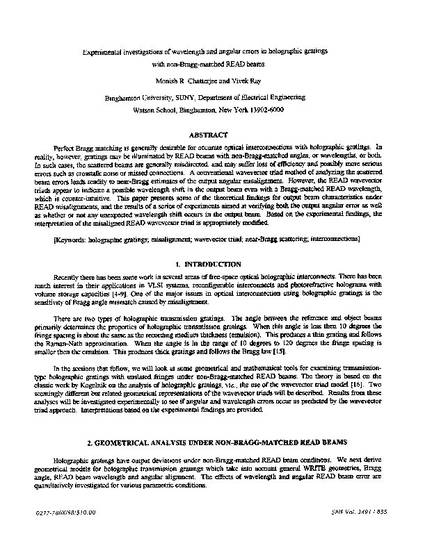
Perfect Bragg matching is generally desirable for accurate optical interconnections with holographic gratings. In reality, however, gratings may be illuminated by READ beams with non-Bragg-matched angles, or wavelengths, or both. In such cases, the scattered beams are generally misdirected, and may suffer loss of efficiency and possibly more serious errors such as crosstalk noise or missed connections. A conventional wave-vector triad method of analyzing the scattered beam errors leads readily to near-Bragg estimates of the output angular misalignment. However, the READ wave-vector triads appear to indicate a possible wavelength shift in the output beam even with a Bragg-matched READ wavelength, which is counter-intuitive.
This paper presents some of the theoretical findings for output beam characteristics under READ misalignments, and the results of a series of experiments aimed at verifying both the output angular error as well as whether or not any unexpected wavelength shift occurs in the output beam. Based on the experimental findings, the interpretation of the misaligned READ wave-vector triad is appropriately modified.
Available at: http://works.bepress.com/monish_chatterjee/39/

This document is provided for download in compliance with the publisher's policy on self-archiving. Permission documentation is on file.
DOI: http://dx.doi.org/10.1117/12.328637